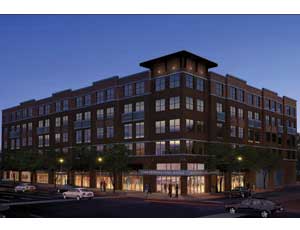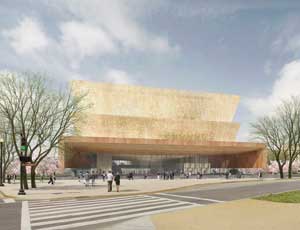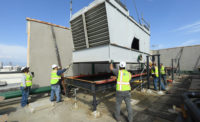Two years ago, the D.C. construction community was overwhelmed with opportunities and hard-pressed to find enough hands to take on work.


These days, many firms are burning backlog and hoping they can hold on until the economy rebounds and private projects begin to flow again.
Despite the steady stream of government work that has historically made D.C. relatively recession-proof, the severely frozen private market brought on by the national credit crunch has sent a flood of firms scrambling into the limited pool of public work. It’s a scenario that has made for fierce competition and low-ball bidding.
“The competition level for work here is unlike anything I’ve ever seen,” says John Tarpey, division president and chief executive officer of Balfour Beatty Construction in Fairfax, Va. “It’s not unusual to see more than 40 bidders on a job that would have had less than 10 bidders in the past. On almost every single [bid result], we see someone who is significantly lower than the rest of the field.
“It’s not uncommon to see bids coming in at more than 30% below budget. That’s a sign of desperation.”
While general contractors and architects may be trimming margins to find work, the subcontracting community is a prime contributor to pricing pressure, says John Barron, president of Foulger-Pratt Contracting in Rockville, Md. He says that subs without the luxury of months of backlog are quoting unreasonably low prices just to keep afloat.
“The problem for GCs is that they may be relying on subs who are in a delicate state and taking chances,” he says. “If you go with those subs and you’ve already got low margins, you’re now the one in a fragile state. If those subs start going belly-up, there will be a ripple effect that could take a few GCs with them.”
Going Public Like many firms in the area, Foulger-Pratt has followed the market and shifted its focus from private work to public jobs. The firm landed one of the few large private projects in the metro area to secure financing this spring—the $80-million, mixed-use Penrose Square in Arlington, Va. The project, which was designed by Heffner Architects of Alexandria, Va., is scheduled for completion in late 2011.
Still, Barron recognizes that jobs like Penrose are a rare find these days.
“With the banking side of the equation being so challenging for private developers, it’s become the federal show,” he says. “If you haven’t moved into the federal market, where will you get your work?”
Harkins Builders of Marriottsville, Md., is following a similar path. In recent years, the company has made a strong push into the District with several mixed-use and multifamily residential projects. Harkins is currently building private projects at 2300 Pennsylvania Ave. and Parkside Terrace in D.C.



Post a comment to this article
Report Abusive Comment